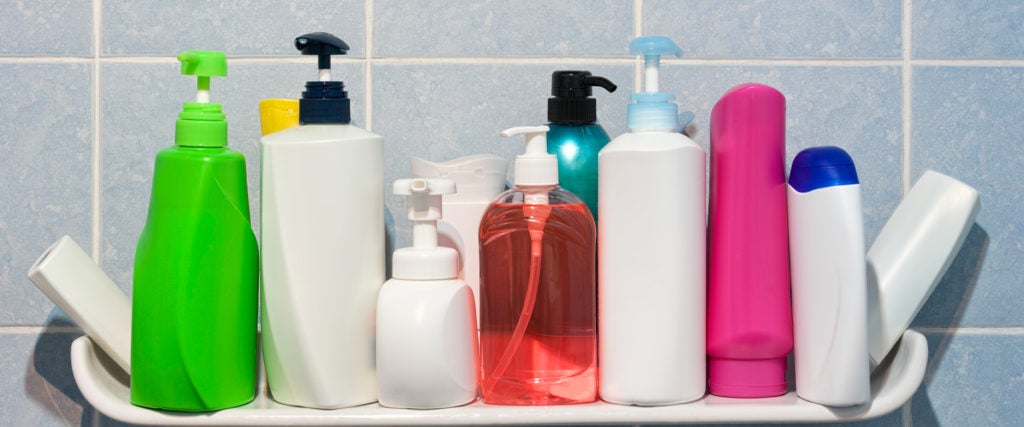In my shower right now, I have approximately three different conditioners, three shampoos, two body washes and two face washes. A more space-economical person might ask: Can’t some of these duplicate items be combined? To which a more product-devoted person might then ask: Are you out of your fucking mind?
Mixing up products seems like the ultimate careless dude move, akin to the three-in-one shampoo/body wash/conditioner. But it’s not always an entirely stupid idea. Beyond the need to create some more room and toss some bottles, there’s not exactly a good reason to mix products, but so long as you keep them within the same category, it probably won’t hurt. There are, however, some exceptions to this rule.
To start, while there’s no risk in combining two bottles of the exact same product — or even products of the same formula but of different scents (you might not like the latter result, but it probably won’t impact its effectiveness) — most shampoos, conditioners and other bath products are specifically formulated for certain needs. Mixing them, then, can defeat their intended purpose.
For example, many shampoos for curly hair don’t contain any sulfates, the chemical that leads to the sudsy, bubbling effect of soap, which can also be drying and damaging. Combining a sulfate-free shampoo with one that contains sulfates would ruin both products. If you were used to a sulfate-free shampoo, you’d likely find the mixed version harsh. If you were accustomed to the sulfate shampoo, you might find the mixed version not effective enough. Either way, the make-up of each product is too dissimilar to remain effective when mixed.
As a basic rule of thumb, check the ingredients in both products you’d like to mix. Are they nearly the same, especially in the top ingredients? Then it might be all right to mix. Again, look for sulfates, which are often in body and face washes, too. For whatever reason, people seem to care less about the formulas of their body washes than they do their shampoo, conditioner and face wash — usually, that’s because the latter products are purchased to address a specific concern. Body wash, on the other hand, is largely just used to get the job done. Like shampoo, you might not wanna mix sulfate-free body wash with ones that contain sulfates, depending on your preferences, but most body washes are pretty straightforward in their composition and can otherwise be mixed just fine. Face washes can vary — some contain acne-fighting ingredients, others anti-aging, while some are as simple as baby soap. Because of how much these can differ, mixing them should be avoided.
Conditioners can usually be mixed, but you might not be happy with the results. Some conditioners are meant to be used once a week, but others can be used every day. Like everything else, you might just hinder their effectiveness by mixing them.
With any possible mixing, in addition to checking the ingredients, try mixing a single-use in the palm of your hand before mixing the whole of the bottles together. If it all goes well, then great, mix it all up. If it doesn’t, at least you didn’t waste all that product.
Hopefully it goes without saying, but don’t mix anyone else in your home’s products without asking them, even if the ingredients seem similar. You’ll permanently give product-mixing a bad rep. If you’re on your own, though, you can mostly do whatever you want. Really, you can even mix your sulfate-free and sulfate-containing shampoos if you want. It’s your life — make a shitty shampoo concoction if you feel like it.

